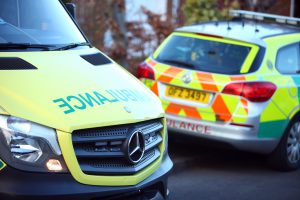27th September 2018
As part of the wider HSC Transformation Programme set out in the “Health and Wellbeing 2026: Delivering Together” strategy, the Northern Ireland Ambulance Service today launches a consultation on proposals for changing how we deliver our services. The proposed changes are the most radical development in ambulance provision over the past 20 years.
In recent years the demand for ambulance services has significantly exceeded our capacity to respond. The number of ambulance responses dispatched to calls has increased by 50% over the last five years. This has resulted in many people having to wait longer for ambulances than we would wish, with response times increasing year on year, and falling well below the Ministerial targets.
Our proposals seek to introduce changes that will ensure that those with the most serious life-threatening conditions get the most immediate and appropriate response. We are also proposing to introduce improved call handling procedures for those calls which are less serious, ensuring that they receive a response appropriate to their needs.
 Michael Bloomfield, NIAS Chief Executive, launching the consultation document said:
Michael Bloomfield, NIAS Chief Executive, launching the consultation document said:
“The increase in demand for ambulance services seen in recent years and the resulting increase in waiting times highlights that the current model is not sustainable.
Consistent with the direction of travel outlined in “Health and Wellbeing 2026: Delivering Together”, NIAS has been introducing a range of transformations over the past few years which are improving the quality of care we provide to patients and reduces the number of patients needing to be taken to hospital Emergency Departments.
However, it is now time to reform our clinical response model which has been in place for over 40 years. At present, NIAS categorises over 30% of all calls we receive as immediately life threatening, requiring an 8 minute response. Evidence from elsewhere and the experience of our own clinical staff indicates that a much smaller proportion of calls require this speed of response.
By more accurately identifying the most clinically urgent calls, we will more consistently be able to respond to those calls within the appropriate time. For other calls our proposal will mean that we send the most appropriate type of response first time”
NIAS would welcome responses from all stakeholders to the consultation document which can be accessed by clicking here.
